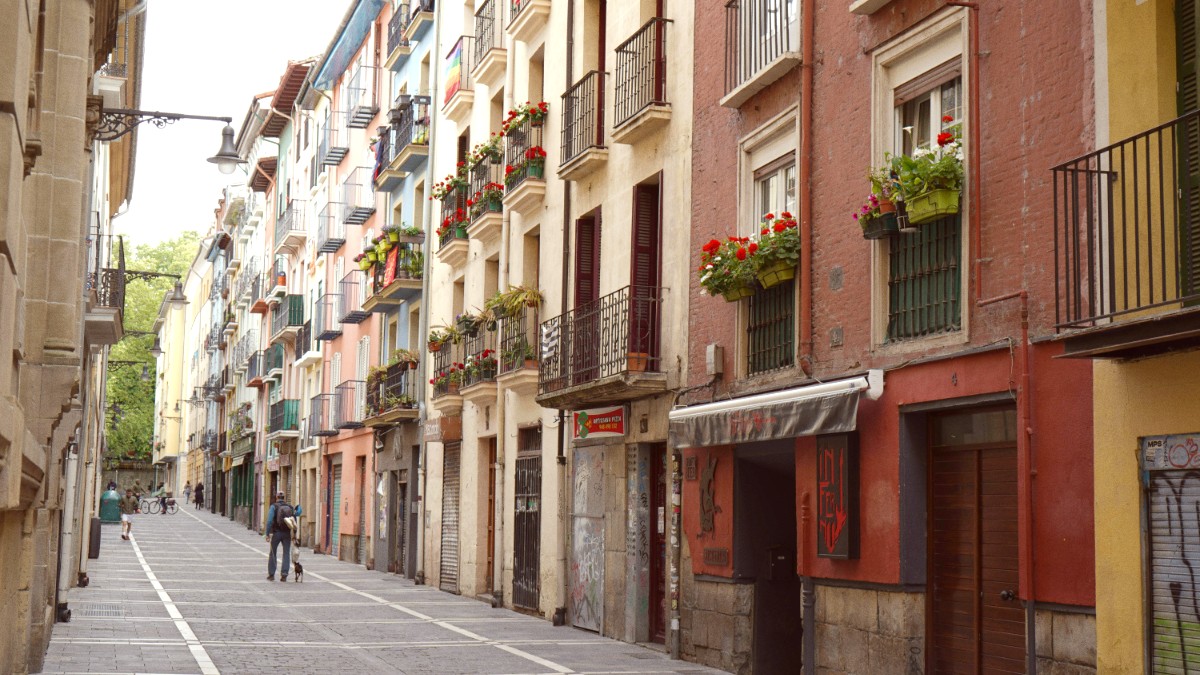
Aragon Basque Country And Navarra, Spain
Pamplona's cuisine celebrates high-quality local produce. The fertile lands of Navarra deliver exceptional vegetables.
Proximity to the Pyrenees provides a steady supply of fine meats. This blend of influences makes for a distinct local cuisine.
Robust and natural flavors; cooking spotlights fresh ingredients rather than heavy spices. Parsley and garlic common for savory depth.
Navarra is famous for vegetables with protected designations of origin (DO), ensuring quality and authenticity.
Lunch (2:00 PM - 4:00 PM) is the most substantial meal. Dinner (from 9:00 PM) is lighter. Bars serve Pintxos all day.
Small, individual portions of food, often on bread. Pamplona's Old Town has many Pintxo bars.
Popular: Tortilla de patatas, Gilda (olive, anchovy, pepper), creative gourmet options.
Thin, fast-cured sausage from minced pork, garlic, salt, and paprika. Distinctive orange-red color.
Often fried, served as a Pintxo or with fried eggs.
Sweet, mild red peppers from Lodosa, Navarra. Roasted, peeled, and stuffed with meat or cod.
Protected designation of origin. Flavorful and tender.
Traditional Navarrese liqueur from sloe berries macerated in anise-flavored spirit. Sweet, aromatic digestif. Find Pacharán on Amazon.
Traditional sheep's milk cheese from Basque Country and Navarra. Firm, smoky, often served with quince jelly (Membrillo).
Restaurants with Michelin stars or guide recommendations. Modern interpretations of Navarrese cuisine.
Abundant throughout the city, offering comfortable dining focused on regional specialties.
Pintxo bars deliver a varied and delicious meal at a lower cost. Concentrated in the Old Town.
A traditional covered market. Fresh local produce, meats, fish, cheeses.
Some stalls sell prepared foods or offer tastings. An authentic glimpse into local life.
The market provides a sensory experience beyond typical tourist stops.
Perfect for buying ingredients for self-catering.
Pasta and pizza restaurants.
Chinese and Japanese establishments.
Some other European options available.
Often finds international dining in this area.
Awareness grows. Some restaurants may offer gluten-free bread or specific dishes.
Learn Spanish phrases: "Soy celíaco/a" (I am celiac), "Sin gluten, por favor" (Gluten-free, please).
Inform restaurant staff about any severe allergies. Most try to accommodate.
Cross-contamination prevention may vary, communicate clearly.
Clear communication with restaurant staff makes a difference. Spanish phrases for specific dietary needs are valuable.
For severe allergies, consider bringing your own safe snacks, especially for excursions.
Enroll in a class to learn traditional Navarrese dishes. Gain hands-on understanding of local ingredients and techniques.
Visit vineyards in the Navarra region to sample local DO wines and learn about wine production.
Beyond San Fermín, Pamplona and Navarra host various gastronomic events throughout the year.
Mercado de Santo Domingo offers an authentic glimpse into local life. See residents shop for fresh produce and meats.
A sensory experience beyond typical tourist stops.
Seek out local shops with artisan cheeses, cured meats, and traditional Navarrese products.
Support local producers and their craft.
The region's vegetables, especially asparagus and piquillo peppers, are a point of pride and culinary excellence.
Pacharán, an unique digestif, reflects the local tradition of using natural ingredients for distinct flavors.
The Pintxo culture creates a social and flavorful way to experience local cuisine, moving from bar to bar.
Meal times in Pamplona typically run later than in some other countries. Lunch is a significant meal, and dinner often begins around 9 PM or later.